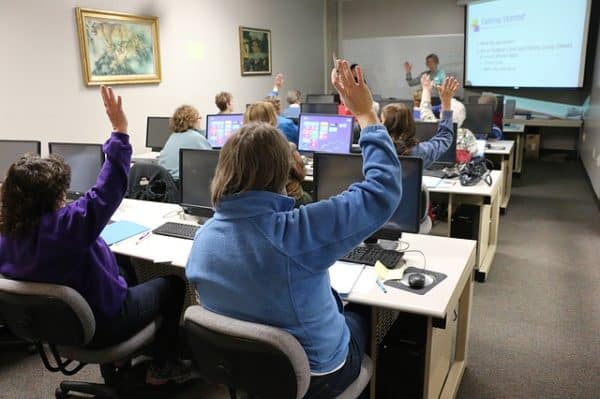
Most of us use technology all day long, both at work and during our leisure times. In fact, we are liable to carry our smartphones with us wherever we go because it helps us organize our day. Although we use all sorts of devices and software every day with ease, it can sometimes be a bit much for our seniors because they did not grow up with it and did not use computers at work.
Fortunately, there are plenty of alternatives for people who aren’t tech savvy but who need to use tech for their basic needs and to communicate with others. In addition, there are classes for seniors to show them exactly how many of the most popular tech devices are actually simple to use.
Let’s take a look at some easy tech to help facilitate communication and improve health, as well as review the rising popularity of tech classes for seniors.
1. Tech for easy communication
As a social creature, human beings need to communicate with each other. When we don’t, when we find ourselves too isolated, we feel lonely, and if this continues for too long, we are subject to mood swings, ranging from anxiety to depression. Unfortunately, in our modern lives, the idea of large close families who spend a lot of time together appears to be a rarity. Consequently, we often rely on our mobile phones to stay in touch.
However, many seniors find it difficult to see the small icons on smartphones and can’t figure out how to use it properly. The Jitterbug smartphone was created in response to this need for a simpler mobile phone. This phone has big buttons and a large screen which makes it easier to see text and numbers. Moreover, not only are the buttons bigger than on most mobile devices but they are also backlit to make it easier to dial. The menu is simple. It consists of YES and NO buttons to navigate. There is also a 5-star button to get help in an emergency. The Jitterbug comes with a built-in camera with flash to make it easy to take photographs on the go. To facilitate listening there are powerful speakers that make conversations loud and clear, and to facilitate reading in dimly lit areas, there is a reading magnifier complete with LED flashlight.
2. Tech for measuring daily physical activity and rest at night.
The human body is designed for movement and when we get too sedentary, our health declines. Still, it can be difficult to assess how much activity we get in one day. This is why wearable devices have become so popular. They help raise our awareness of how much activity we are getting rather than how much we think we’re getting.
One of the most popular wearable devices is Fitbit. It is simple to use and it provides immense value, helping people of all ages be more active and to be more aware of how many steps they take a day. The ideal goal is to hit 10,000 steps a day, which is about 5 miles (8 km), although even half that amount is still fairly good. Besides tracking steps, it also measures how many steps are climbed and how many calories were burned in a day, and how much sleep a person gets a night. There is also a smart scale, The Fitbit Aria Wi-Fi Smart Scale for someone who wants to keep track of their weight, their body fat percentages, and their BMI (body mass index).
3. Tech Classes for seniors
Many seniors don’t use tech because no one has shown them how. In response to a growing demand, there is an increase in tech classes on basic computer and mobile phone usage. According to a HuffPost article by Jim T. Miller, Helping Seniors Learn New Technology
“There are many communities that offer beginning computer and personal technology classes for older adults that are new to technology. To find out what’s available in your area, contact your local public library, senior center, college or university, or local stores that sell computers.” The article then references a variety of sources and contact information where seniors can learn more about classes, such as SeniorNet, Oasis Connections, Lifelong Learning Institutes (LLIs), AARP TEK Workshops, and Older Adults Technology Services (OATS).
Today, there are many options for seniors who are unfamiliar with tech to find user-friendly devices and to learn more about technology.
 Gearfuse Technology, Science, Culture & More
Gearfuse Technology, Science, Culture & More


